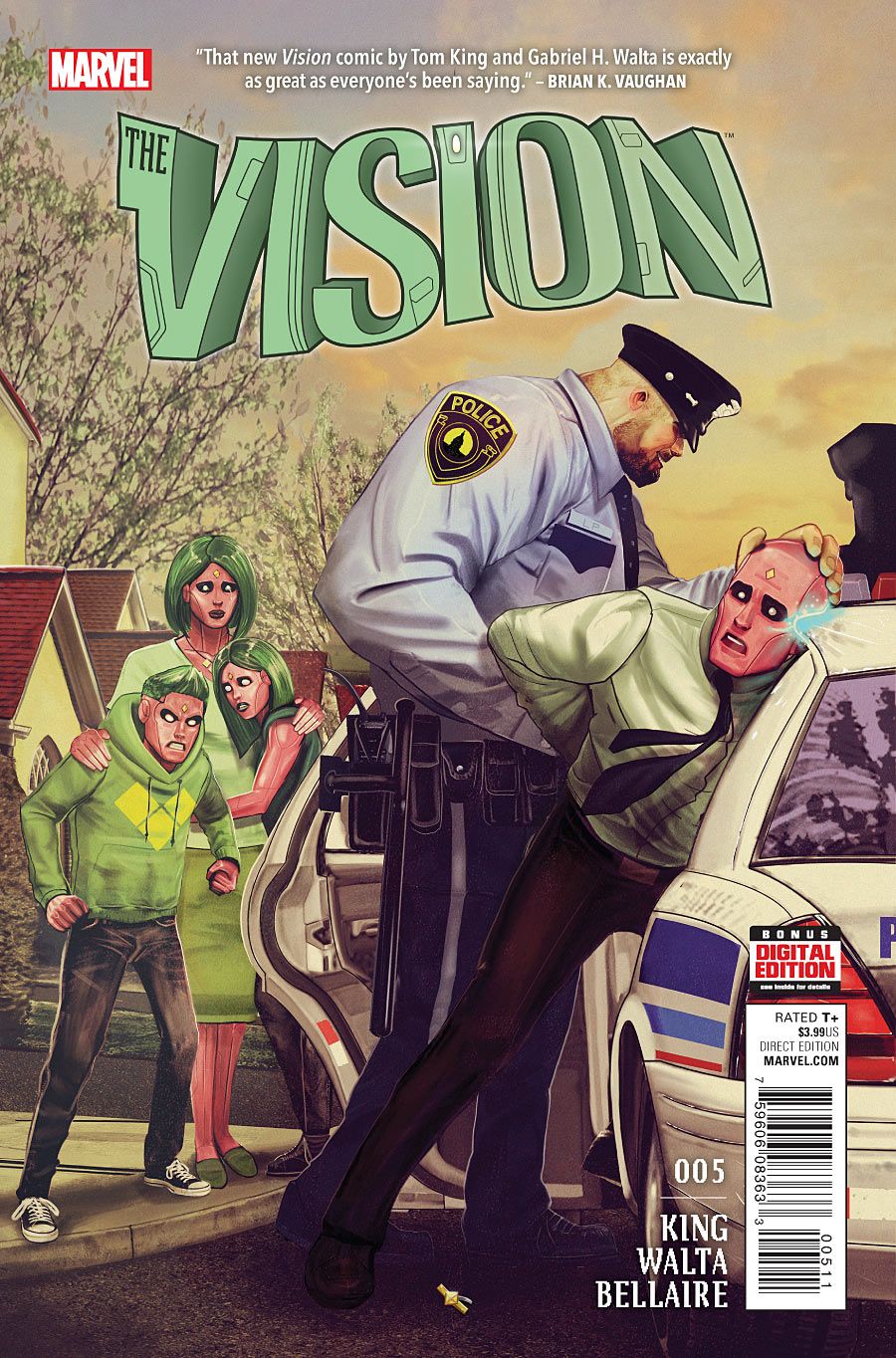In issue #5, "The Vision" continues to take its "uncanny valley" atmosphere to weirder and more heartbreaking depths. Tom King and Gabriel Hernandez Walta take a gimmicky construct and morph it into a creepy, powerful and shockingly emotional story. Whether in the colors, the artwork or the dialogue, this issue finds new ways to expose the eerie and devastating moments in the most innocuous events. There's a good reason everyone is talking about this book.
In this issue, the Visions have to deal with the escalating consequences of the Grim Reaper's murder. King captions the first quarter of the issue with Shylock's "do we not bleed?" monologue from Shakespeare's "Merchant of Venice" and closes it with a robotic, itemized list of the Vision's heroic actions. This high stylization could have gone seriously wrong; it's the sort of gambit that can only work with delicate and complex execution, and King nails it. He has such a strong ear for the sinister and sad possibilities that underlie seemingly bland speech. He lets simple sentences like "It will not take long" land like judgments, and these moments expose the mercilessness that can come with "logical" thinking. Meanwhile, the use of repetition renders comforts like "everything is normal" desperate and pleading. Conversations in "The Vision" are relentlessly unexpected.
Of course, whether highly stylized or deceptively simple, risky dialogue is guaranteed to flop without an artist who understands the pacing. Gabriel Hernandez Walta's artwork balances King's words perfectly. He can capture the tumultuous emotion behind a straightforward statement or creep the reader out with the blank, empty faces that accompany a kind sentiment. That play between the text and the visuals gives "The Vision" #5 so much of its power, and it invites the reader inside the characters' heads. Walta constantly encourages the reader to play psychologist.
Colorist Jordie Bellaire delivers a dulled-out version of suburbia that feels like the opening of a '50s or '60s horror movie. All the buildings and walls look terribly ordinary: grey and beige alongside the Visions' vivid red and green faces.
The element that ties this issue together, though, is the lettering. Clayton Cowles handles an almost absurd amount of text -- much of it in page elements that run simultaneously beside one another. For example, when the Vision is escorted out of his house to the police station, the story of the detective's first lethal shooting runs alongside the scene in the narration. Cowles and Walta somehow construct the panels to make this not only readable, but easily and enjoyably so. The fact they perform similar feats throughout the issue just makes it all the more impressive.
My main criticism of "Vision" #5 is that there's always something uncomfortable about comparing actual human minority groups to aliens, robots or synthezoids. I think the Shylock speech works well here, but I can appreciate the metaphor while still recognizing that its effect swings both ways: humanizing and contextualizing the Vision family's struggle, yes, but also re-emphasizing the "foreignness" and de-contextualizing the oppression of actual human beings. These comparison always feel a little off for me, even when they land like they're meant to.
Overall, "The Vision" is as much a moving, disturbing must-read as everyone's been saying. If you haven't given this series a chance yet, do yourself a favor and try it out.

